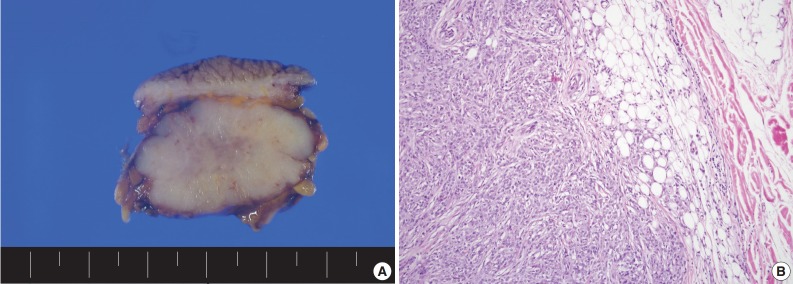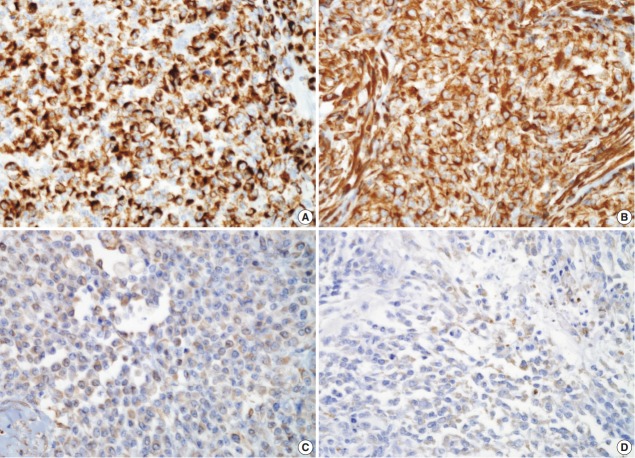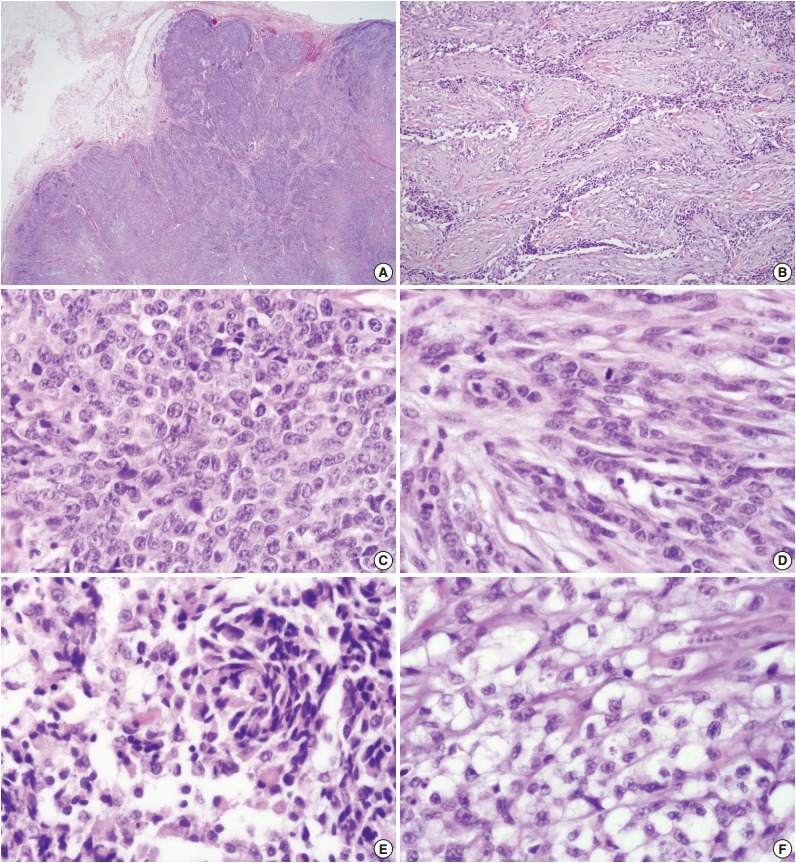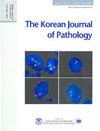Myoepithelial carcinoma of soft tissue: a case report and review of the literature.
Korean Journal of Pathology
Pub Date : 2014-12-01
Epub Date: 2014-12-31
DOI:10.4132/KoreanJPathol.2014.48.6.413
引用次数: 6
Abstract
Myoepithelial carcinoma of soft tissue is extremely rare although its counterpart of the salivary gland is relatively common and well-known with similar morphology. The histogenesis of myoepithelial carcinoma of soft tissue is still unknown. In fact, the tumor may present with myoepithelial differentiation but not originate from myoepithelial cells [1]. The tumor cells are heterogeneous in terms of cell type and architecture. The tumor cells may be epithelioid, spindled, clear, or plasmacytoid. The growth pattern varies and can be solid sheets, reticular, or trabecular architecture without ductal differentiation [2]. Myoepithelial carcinoma usually shows cytologic atypia, mitotic activity, infiltrative growth, or tumor necrosis [2]. Only few studies have been reported because of the rarity of myoepithelial carcinoma of soft tissue [1-4]. Consequently the clinical and pathologic characterization has been limited. Also, the limitation of definite diagnostic criteria and prognostic parameters makes the diagnosis and management of myoepithelial carcinoma of soft tissue difficult. Here we report the first case of myoepithelial carcinoma of soft tissue in Korea.



软组织肌上皮癌1例报告及文献复习。
本文章由计算机程序翻译,如有差异,请以英文原文为准。
求助全文
约1分钟内获得全文
求助全文

 求助内容:
求助内容: 应助结果提醒方式:
应助结果提醒方式:


